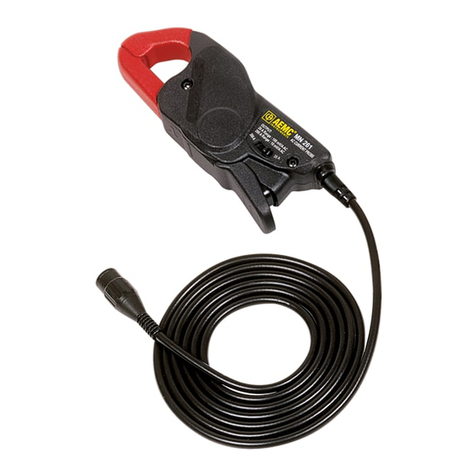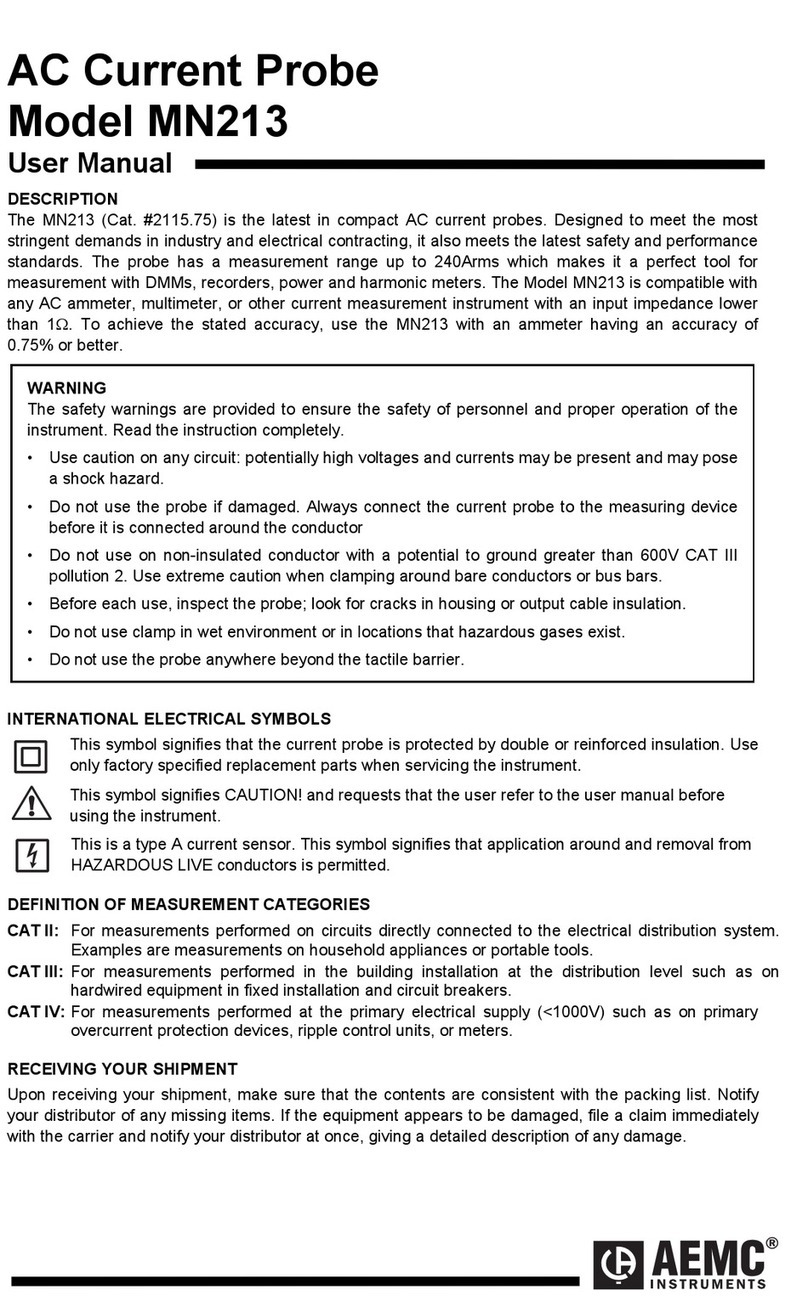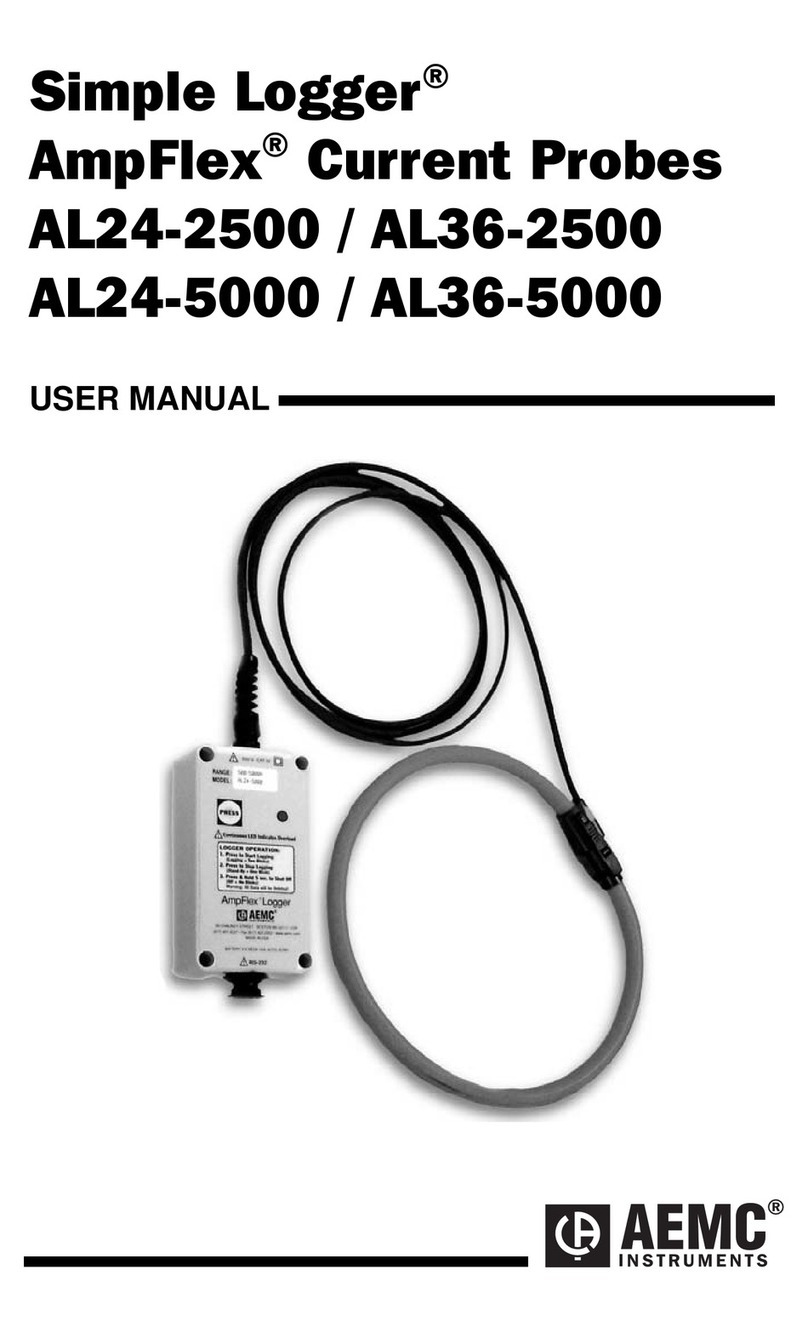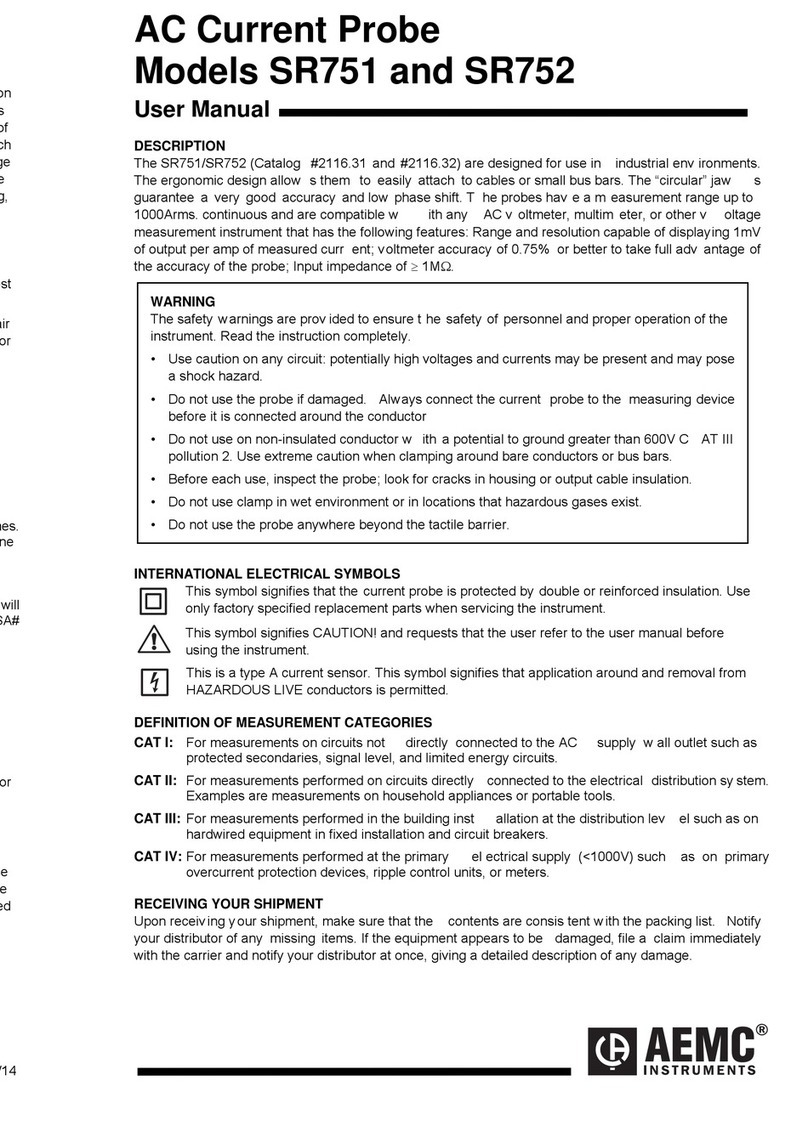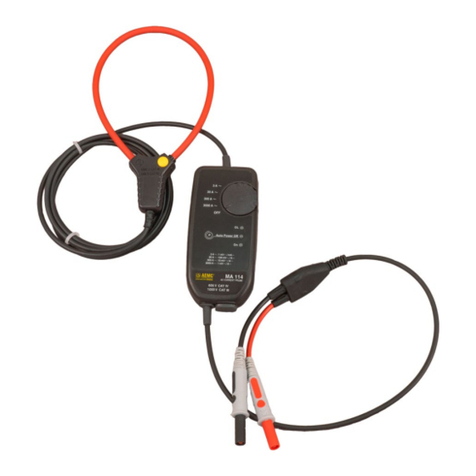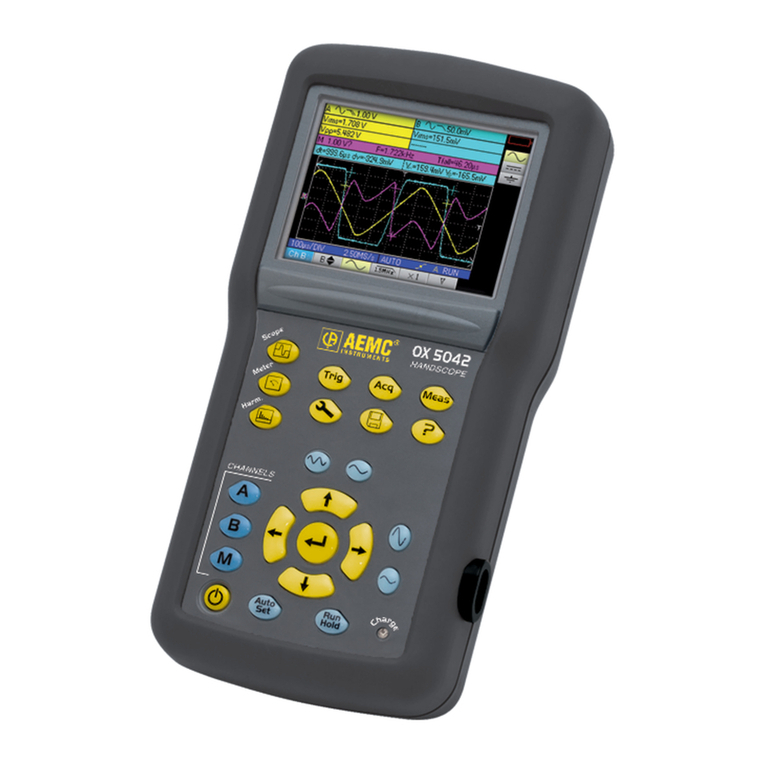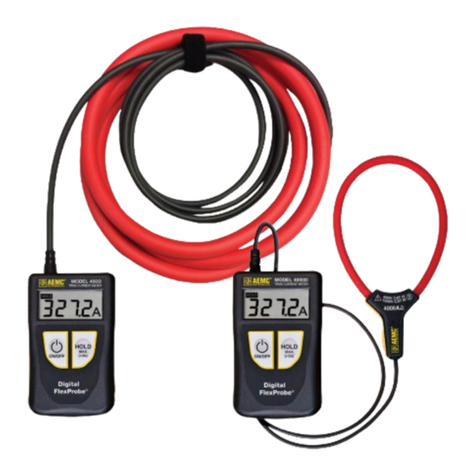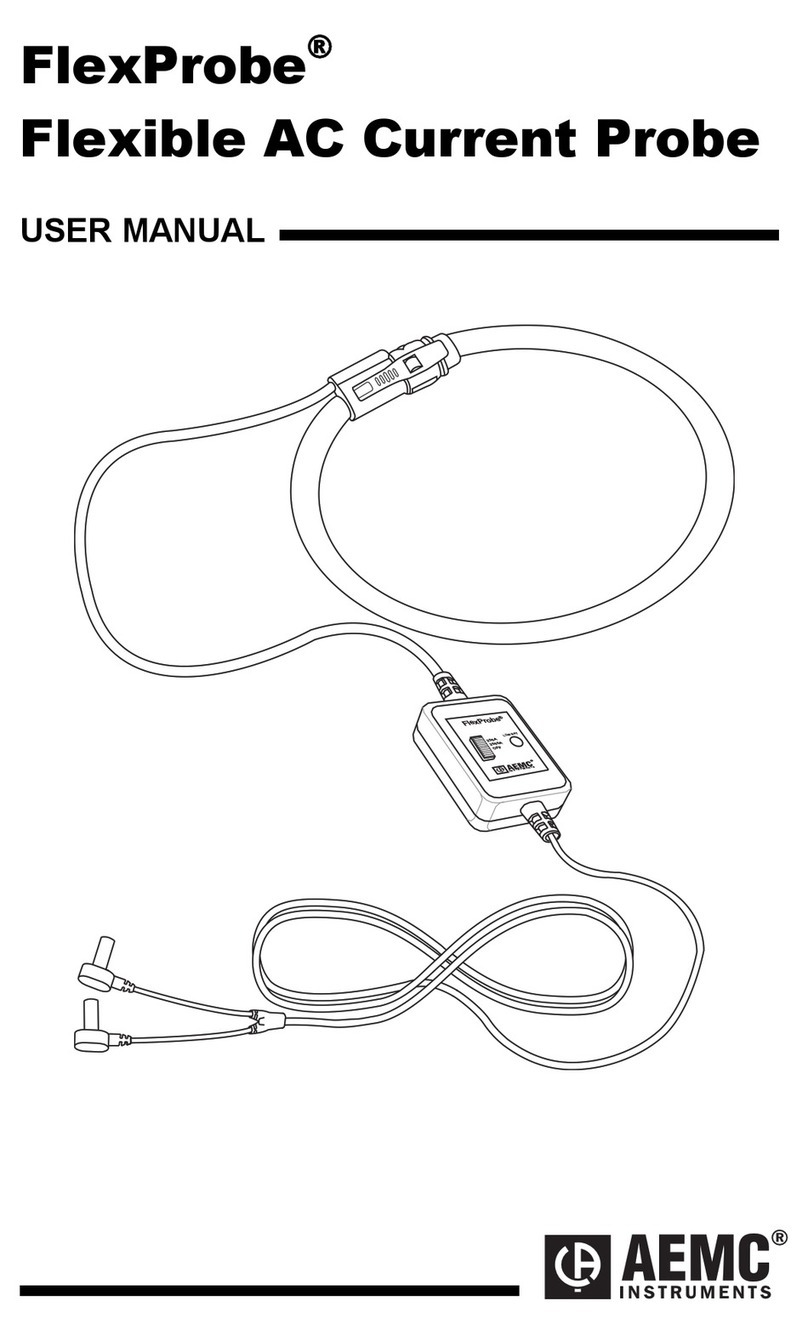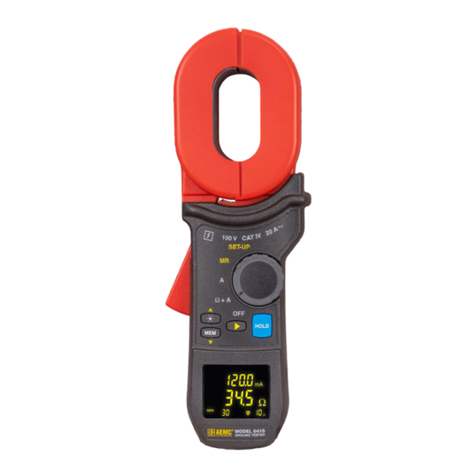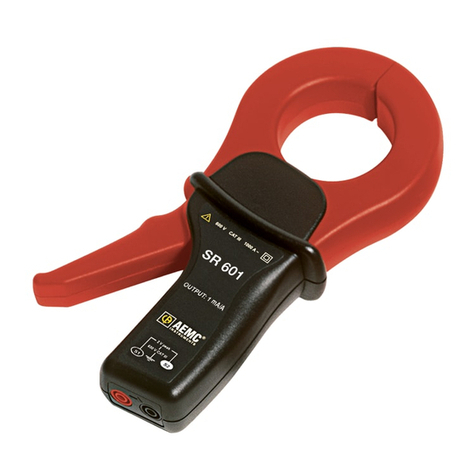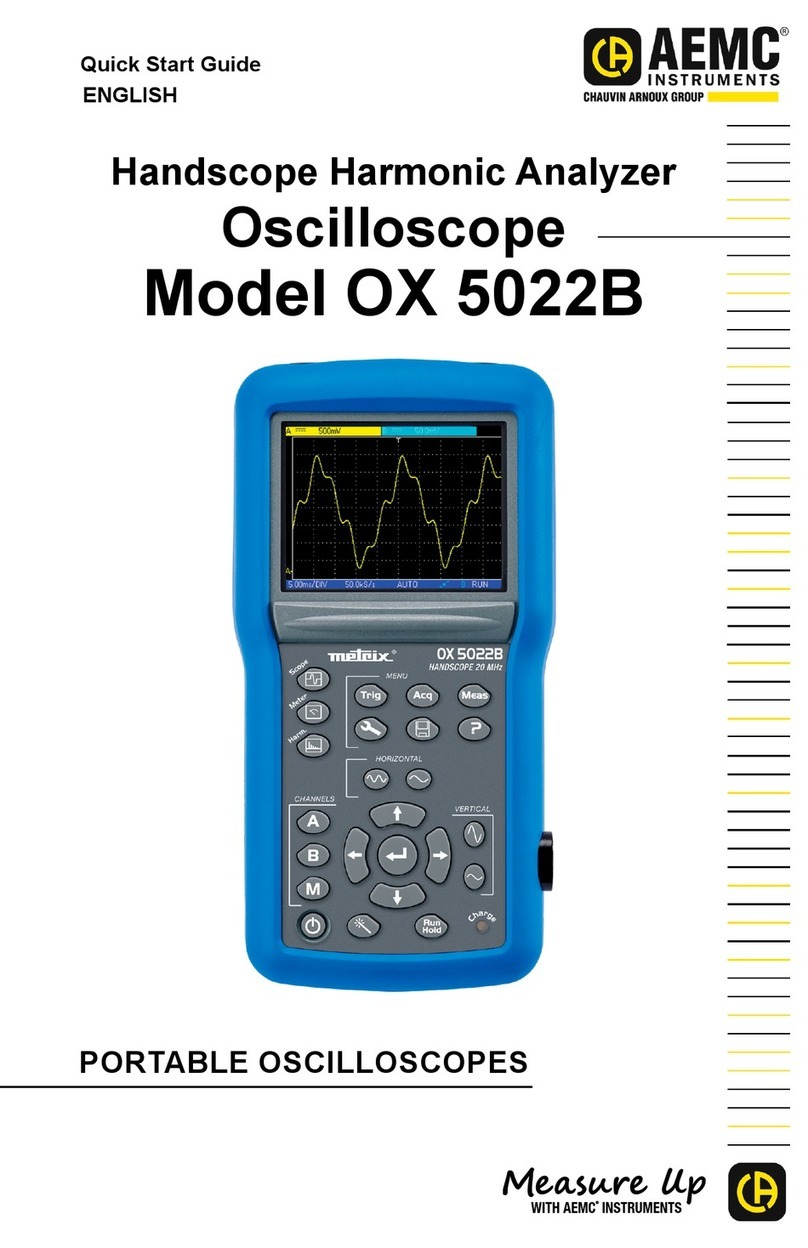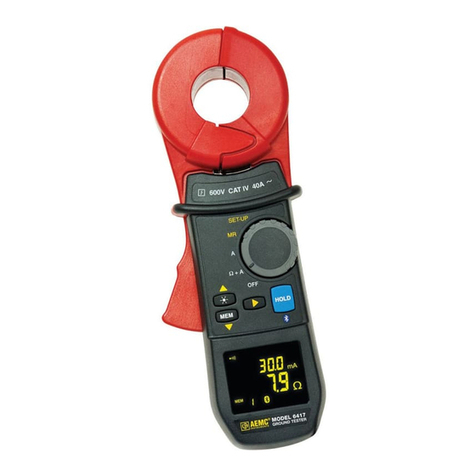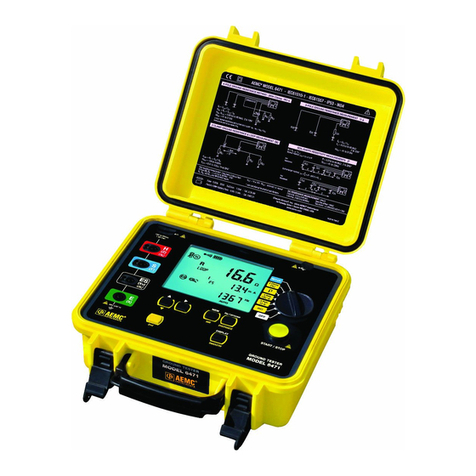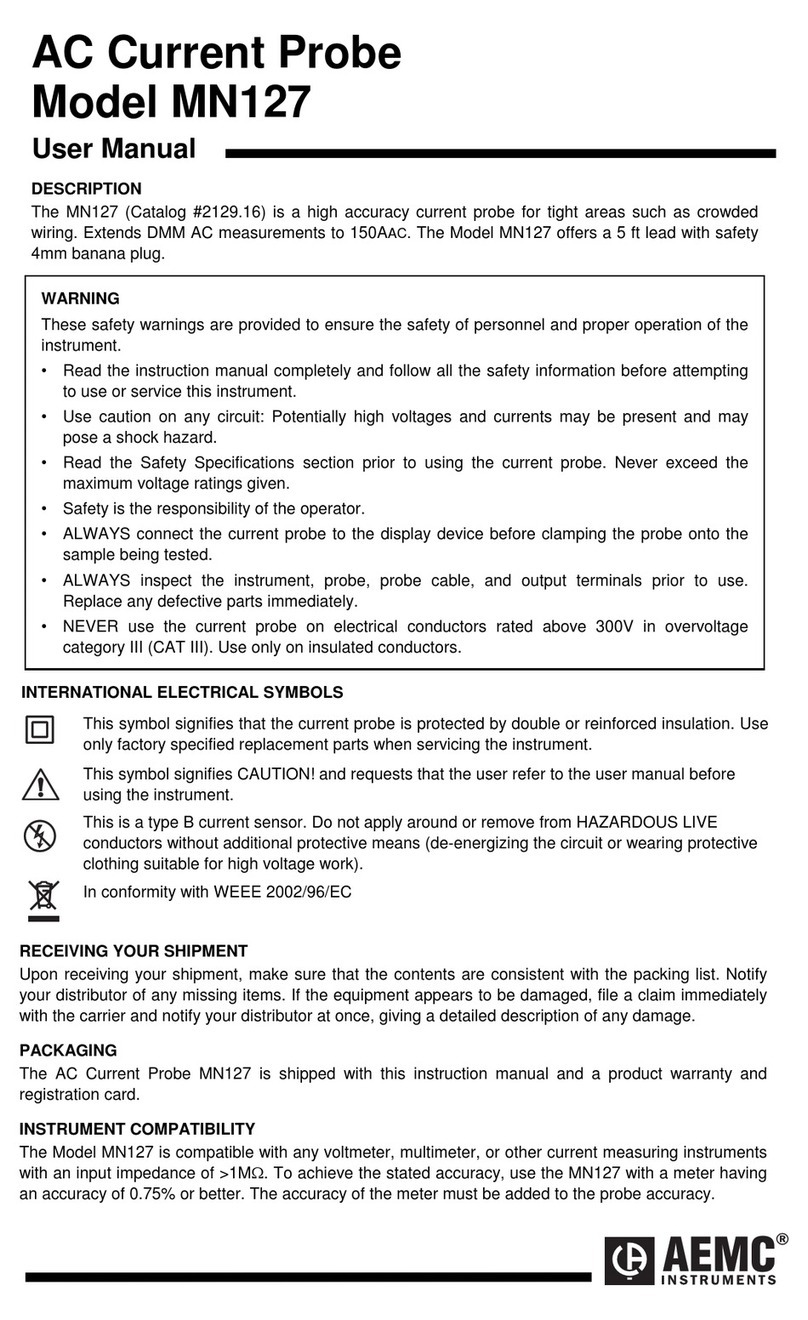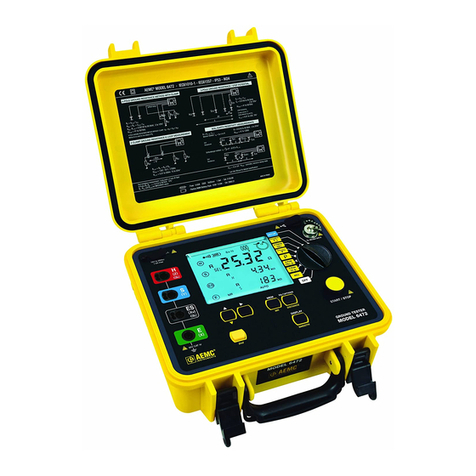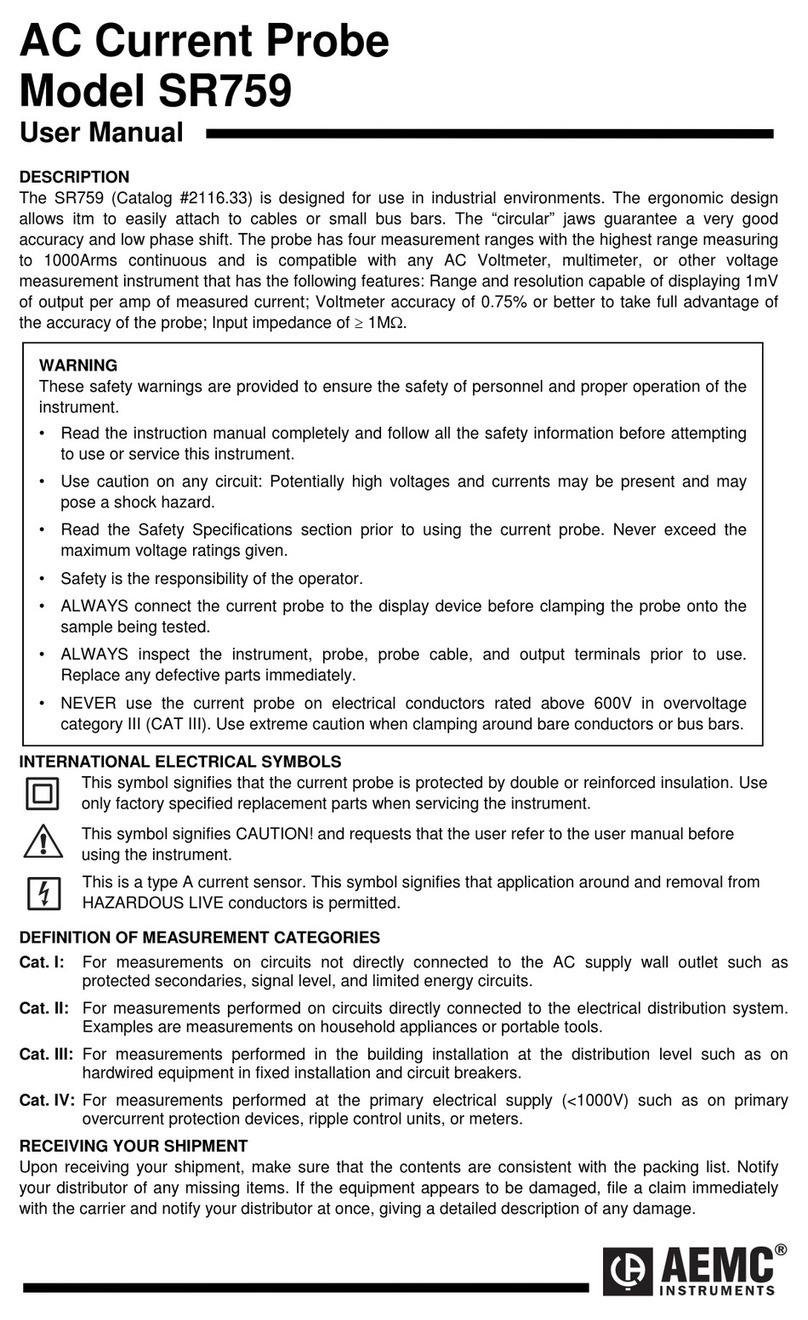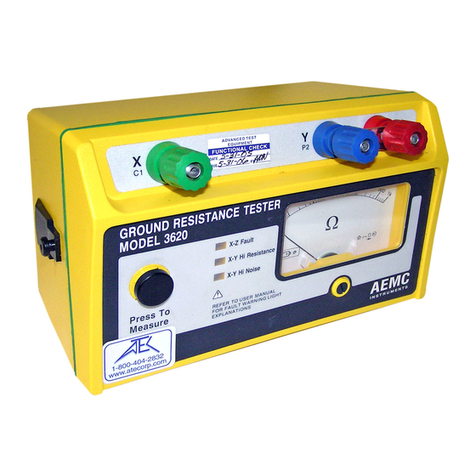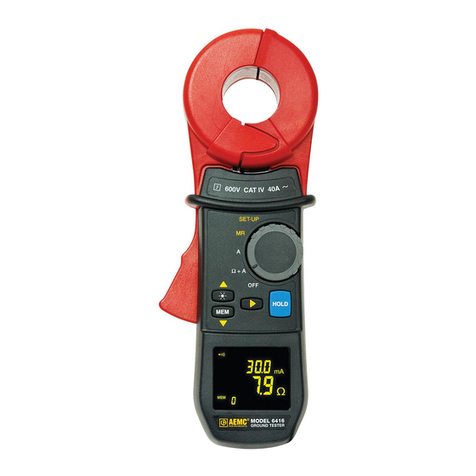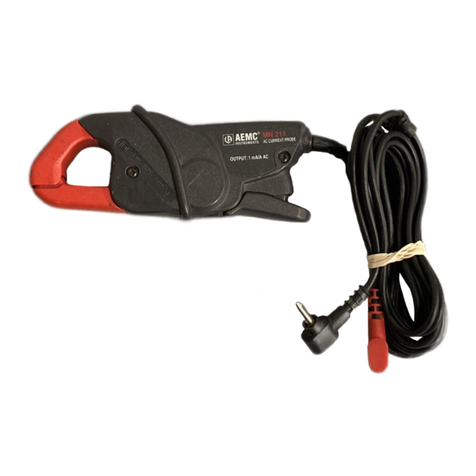99-MAN 100456
Technical Assistance (800) 343-1391 www.aemc.com
Clamp-On Ground Resistance Tester
Model 6416
Step-by-Step Usage Guide
Clamp-On Ground Resistance Tester
Model 6416
Step-by-Step Usage Guide
1. Turninstrumentonbyrotatingtheselectorknobtothe“Ω+A”
position.
2. Allowinstrumenttobootupandbeginbeepingwith0RΩdisplayed
on screen.
3. Checkcalibration—locatethe5Ωcalibrationgaugesuppliedwith
thetesterandclampthemeteraroundanylegofthegauge.
4. Observeinstrumentreading–thereadingshouldbewithin0.2Ωof
gaugespecification(5Ω).Ifreadingiscorrectproceedtostep5.
Ifnot,cleaninstrumentandrepeatsteps3and4.If you are not
able to get the instrument to read within 0.2Ω after cleaning
instrument, do not proceed.Havetheinstrumentrepaired.
5. Removeinstrumentfromgauge.Observeinstrumentreadingwith
nothingintheclamps.Thereadingshouldbe0RΩ
Ifthisconditionisobserved,continuetostep6.If
not,cleaninstrument(seeinstructionsbelow)and
repeatsteps3through5.If,aftercleaninginstru-
ment,youarestillunabletogettheinstrumentto
performasdescribedinsteps4and5,openthe
jawsapproximately1/2inchandletthemsnap
shut.Makesurethatthejawscloseproperly.If
the unit still does not perform properly, do not
proceed.Havetheinstrumentrepaired.
6. SwitchinstrumenttoCurrentMode.(Rotate
selectorswitchtothe“A”positionforAmps)
7. Clampinstrumentaroundthegroundwireorrod.
8. Observereading–iflessthan1.0A,proceedtostep9.Ifbetween1.0and5.0A,
makenoteofreadingandcontinuetostep9.Ifgreaterthan5A,terminatetestand
removeinstrumentfromthegroundwireorrodandcorrecttheproblembefore
re-testing.
9. SwitchinstrumenttoResistance(Ω+A)mode.(Rotateselectorswitchtothe“Ω+A”
position)
10.Waitforreadingtostabilizeandrecordreading.Lockreadingonthedisplayby
pressing“HOLD”.
11.Removeinstrumentfromgroundwireorrodandre-clamptogauge.
12.Observereading–thereadingshouldbewithin0.2Ωofgaugevalue.Ifreadingis
OK–measurementisvalid.Ifreadingiswrong,cleaninstrument(seeinstructions
below)andrepeatfromstep4.
1. Turninstrumentonbyrotatingtheselectorknobtothe“Ω+A”
position.
2. Allowinstrumenttobootupandbeginbeepingwith0RΩdisplayed
on screen.
3. Checkcalibration—locatethe5Ωcalibrationgaugesuppliedwith
thetesterandclampthemeteraroundanylegofthegauge.
4. Observeinstrumentreading–thereadingshouldbewithin0.2Ωof
gaugespecification(5Ω).Ifreadingiscorrectproceedtostep5.
Ifnot,cleaninstrumentandrepeatsteps3and4.If you are not
able to get the instrument to read within 0.2Ω after cleaning
instrument, do not proceed.Havetheinstrumentrepaired.
5. Removeinstrumentfromgauge.Observeinstrumentreadingwith
nothingintheclamps.Thereadingshouldbe0RΩ
Ifthisconditionisobserved,continuetostep6.If
not,cleaninstrument(seeinstructionsbelow)and
repeatsteps3through5.If,aftercleaninginstru-
ment,youarestillunabletogettheinstrumentto
performasdescribedinsteps4and5,openthe
jawsapproximately1/2inchandletthemsnap
shut.Makesurethatthejawscloseproperly.If
the unit still does not perform properly, do not
proceed.Havetheinstrumentrepaired.
6. SwitchinstrumenttoCurrentMode.(Rotate
selectorswitchtothe“A”positionforAmps)
7. Clampinstrumentaroundthegroundwireorrod.
8. Observereading–iflessthan1.0A,proceedtostep9.Ifbetween1.0and5.0A,
makenoteofreadingandcontinuetostep9.Ifgreaterthan5A,terminatetestand
removeinstrumentfromthegroundwireorrodandcorrecttheproblembefore
re-testing.
9. SwitchinstrumenttoResistance(Ω+A)mode.(Rotateselectorswitchtothe“Ω+A”
position)
10.Waitforreadingtostabilizeandrecordreading.Lockreadingonthedisplayby
pressing“HOLD”.
11.Removeinstrumentfromgroundwireorrodandre-clamptogauge.
12.Observereading–thereadingshouldbewithin0.2Ωofgaugevalue.Ifreadingis
OK–measurementisvalid.Ifreadingiswrong,cleaninstrument(seeinstructions
below)andrepeatfromstep4.
Cleaning the Heads
To ensure optimum performance, it is important to keep the probe jaw mating surfaces clean at all times.
Failure to do so may result in erroneous readings. To clean the probe jaws, use a lint free cloth or, if the
jaws are pitted, use a very fine sandpaper (600 grit) to avoid scratching the surface, then gently clean with
a soft cloth. Make sure that the instrument is oriented such that no debris or filings will fall into the unit while
cleaning. Check with your finger afterwards to be sure that no foreign material remains on the jaw surfaces
(both top and bottom).
Cleaning the Heads
To ensure optimum performance, it is important to keep the probe jaw mating surfaces clean at all times.
Failure to do so may result in erroneous readings. To clean the probe jaws, use a lint free cloth or, if the
jaws are pitted, use a very fine sandpaper (600 grit) to avoid scratching the surface, then gently clean with
a soft cloth. Make sure that the instrument is oriented such that no debris or filings will fall into the unit while
cleaning. Check with your finger afterwards to be sure that no foreign material remains on the jaw surfaces
(both top and bottom).
Step 3 Step 3
99-MAN 100456
Technical Assistance (800) 343-1391 www.aemc.com













